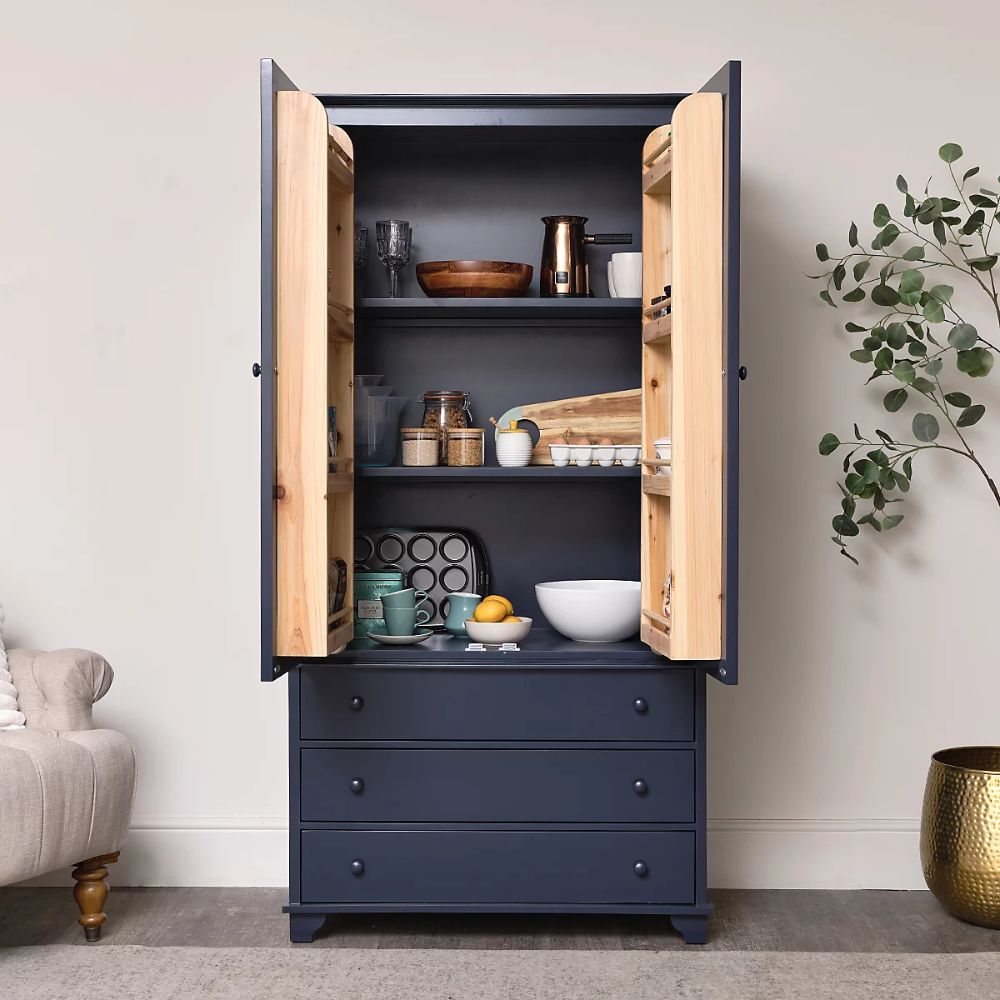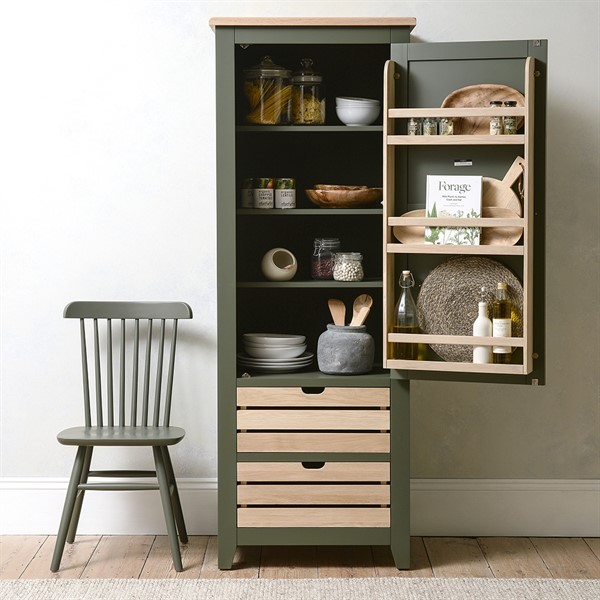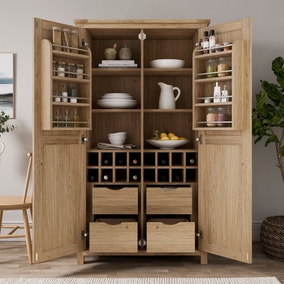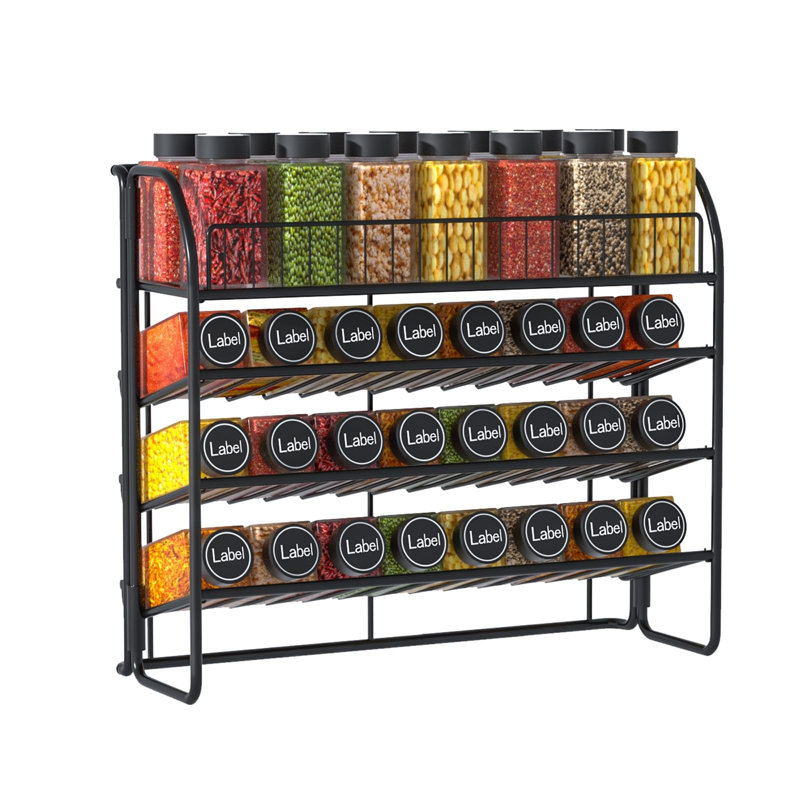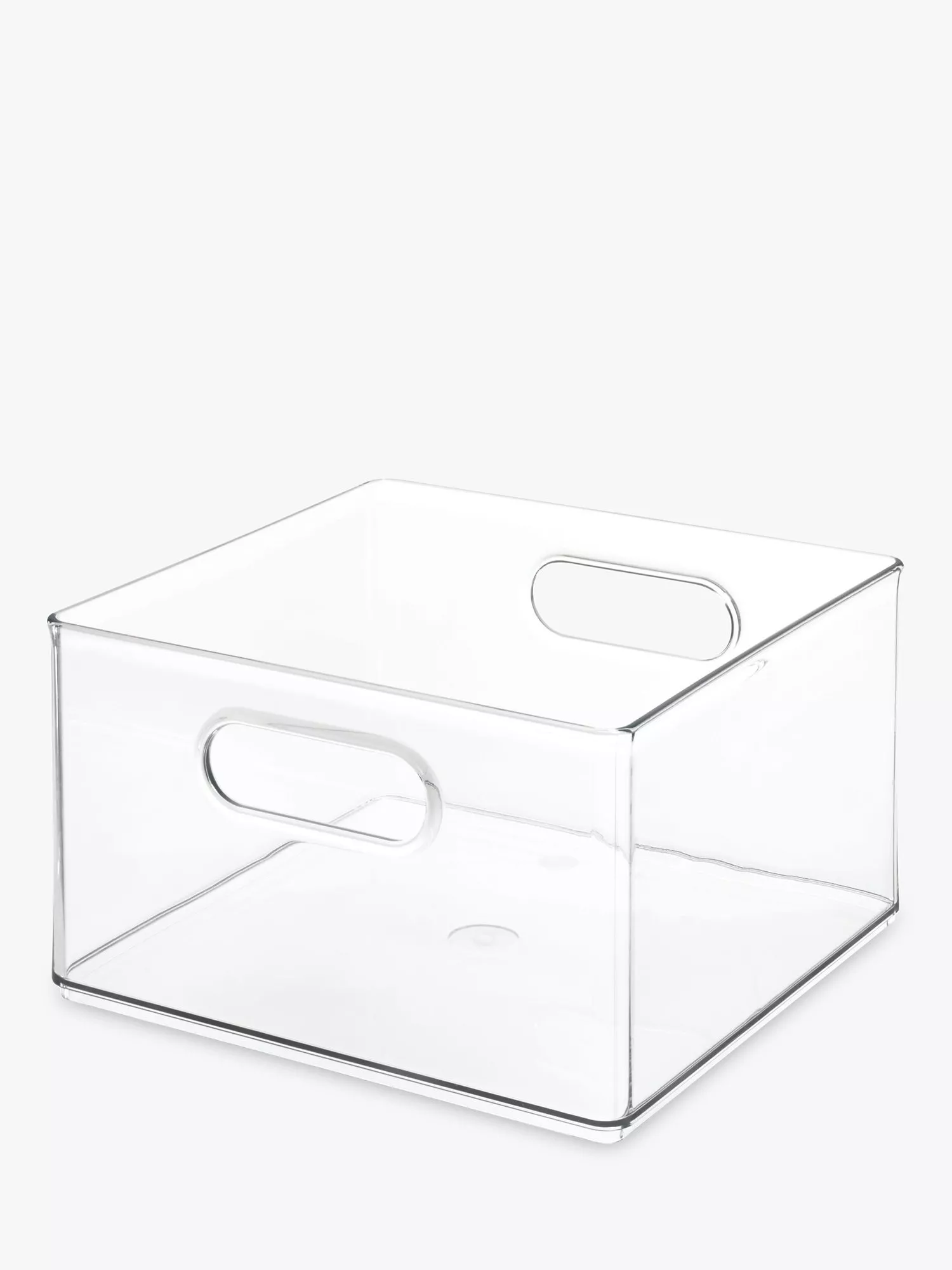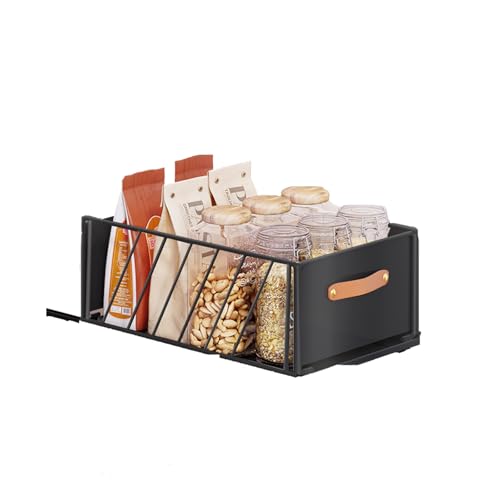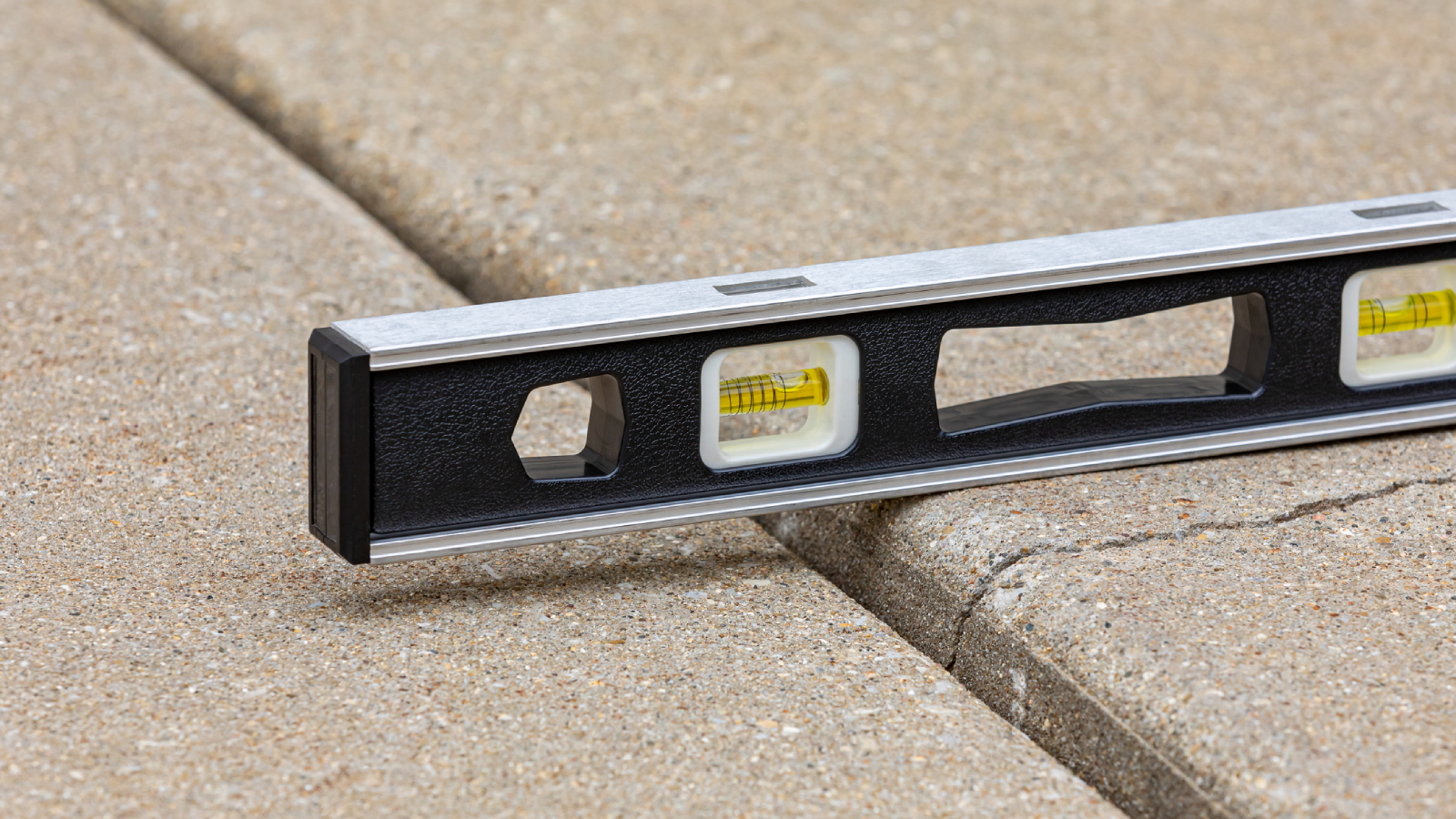The six golden rules of pantry ventilation — how to get this kitchen feature right
Keep your kitchen storage feeling fresh and functional with these pantry ventilation tips that really work

A well-designed kitchen pantry offers the perfect solution to overflowing cupboards and cluttered countertops. These humble units have evolved into a statement of style, elevating kitchen designs while keeping everything from dry goods to cooking utensils neatly organised.
But while it’s easy to focus on creating a picture-perfect pantry display, with labelled jars and neatly stacked containers, the unseen details matter just as much. Proper pantry ventilation is a vital yet often overlooked factor that plays a key role in keeping your food fresh, dry, and free from issues like mould.
Below, we’ll examine why ventilation is so essential, what causes humidity and moisture build-up in these spaces, and the simple steps you can take to ensure your pantry stays as fresh as its contents.
What causes high humidity and poor ventilation in a pantry?
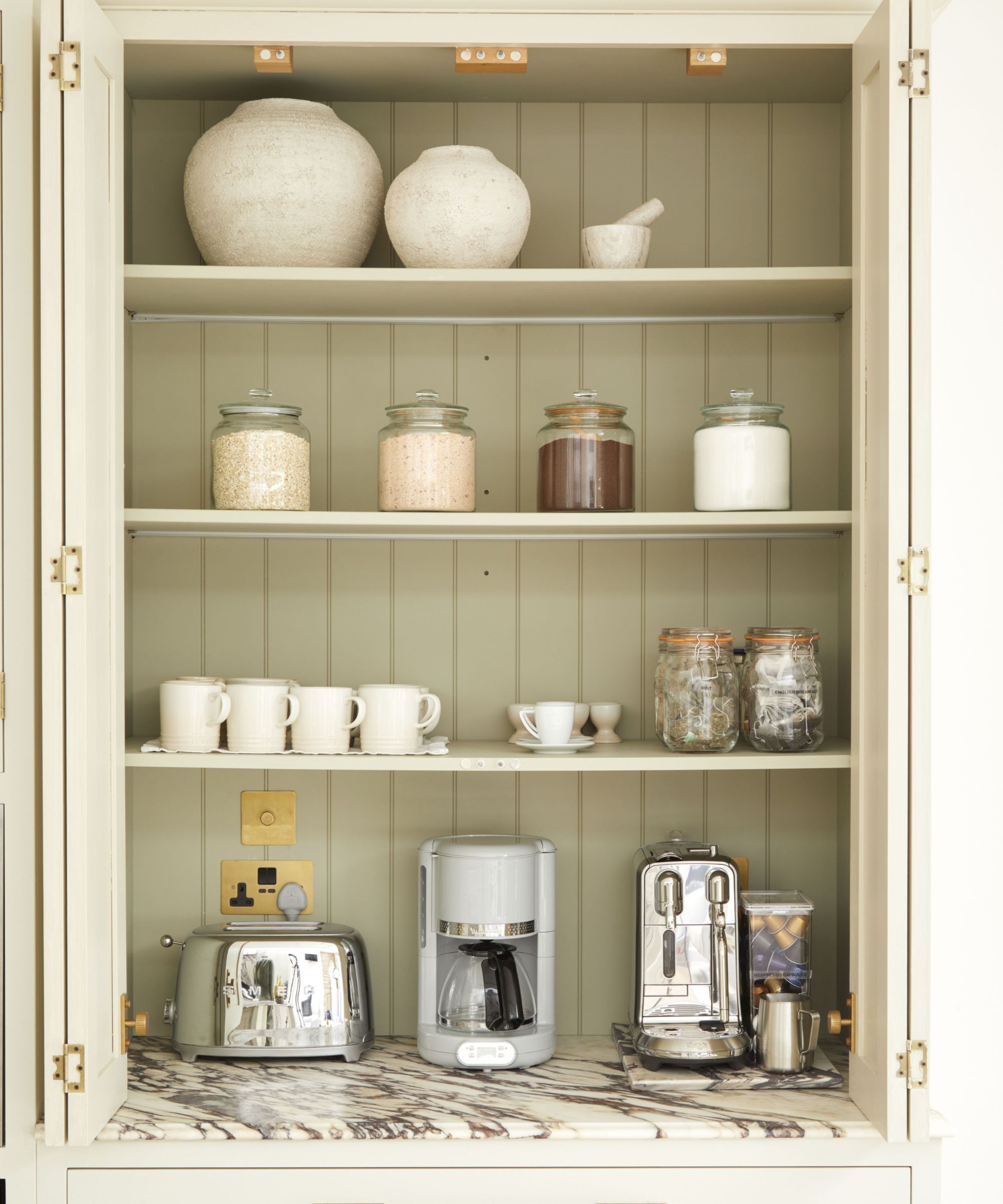
Poor ventilation in a pantry is often the result of inadequate airflow. Kitchen pantries are typically enclosed spaces, and without proper vents, fans, or breathable doors, stale air and humidity can become trapped. Over time, this creates an environment prone to dampness and lingering moisture, particularly if the pantry is located in a part of the kitchen where heat and humidity are already high.
What causes humidity and moisture in a pantry?
One of the most likely causes of excess humidity and moisture in a pantry or larder is the unit's proximity to kitchen heat sources, such as ovens, dishwashers, or fridges. These appliances generate warmth, which, when combined with inadequate kitchen ventilation, can create the perfect conditions for condensation to form on walls, shelves, and even stored items.
Seasonal changes can also contribute to a poorly ventilated pantry, with damp, humid weather increasing the likelihood of moisture seeping into poorly insulated spaces. In colder months, the problem can shift to condensation caused by fluctuations in temperature between your warm kitchen and the cooler pantry. Without adequate airflow to regulate these changes, moisture can collect on surfaces and even affect the quality of your food.
Another key factor is how you store food items. For example, placing warm leftovers or damp containers in a pantry can introduce humidity directly into the air. Overcrowding your pantry shelves can also exacerbate any moisture or humidity issues by restricting airflow and creating stagnant pockets where moisture can settle.
Bring your dream home to life with expert advice, how to guides and design inspiration. Sign up for our newsletter and get two free tickets to a Homebuilding & Renovating Show near you.
Why is pantry ventilation important?
Without proper ventilation, small issues like excess moisture can escalate into bigger problems, such as mould and mildew, or spoiled food. Good ventilation not only keeps your food staples fresh but also protects the unit itself. Over time, moisture can damage cabinets, shelves, and walls, potentially leading to costly repairs or replacements down the road.
Thankfully, keeping your pantry cool and well ventilated doesn’t require a complete overhaul of these spaces – just a few thoughtful adjustments will do the trick.
Freestanding Pantry Cupboards
5 Ways to Improve Pantry Ventilation
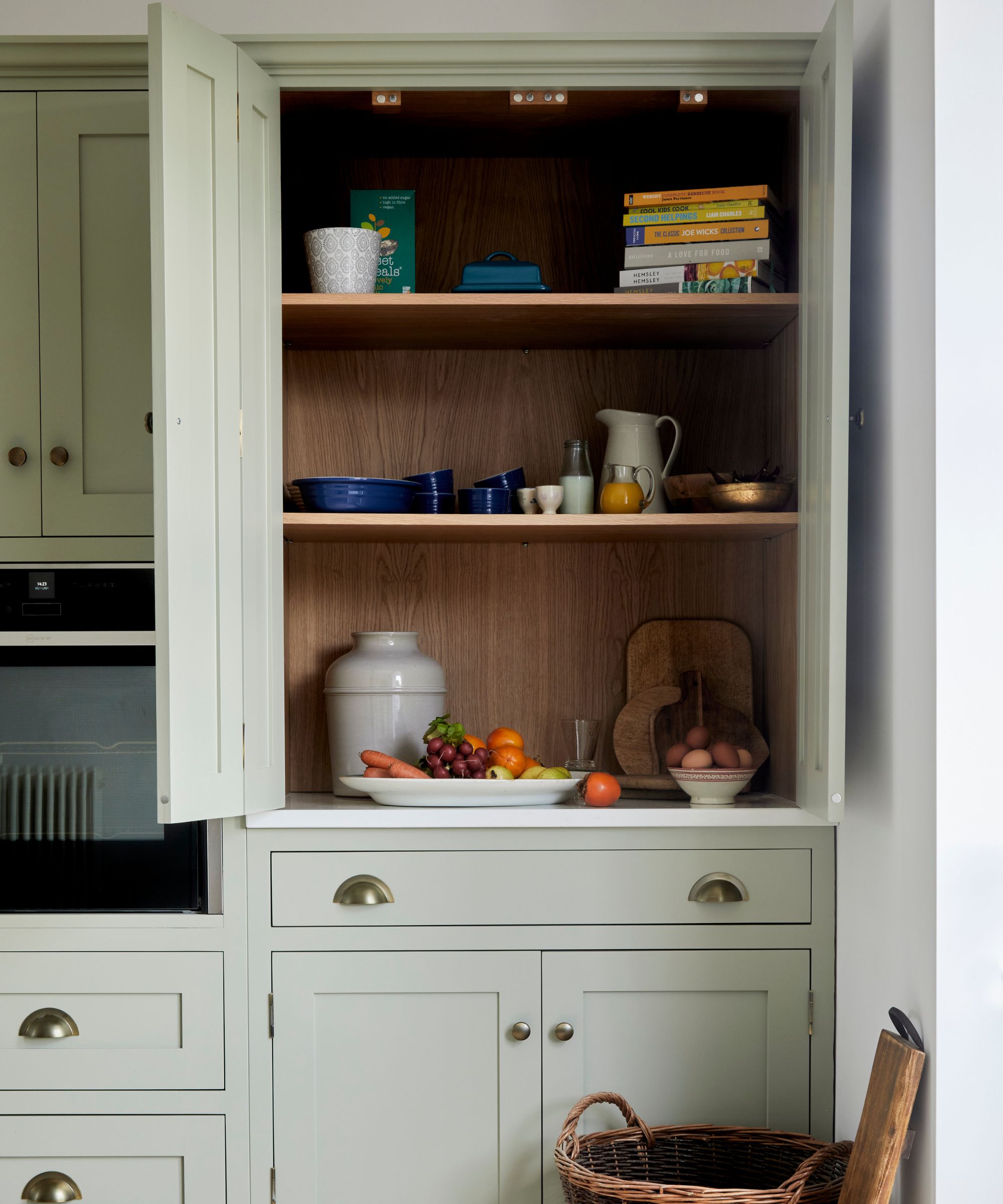
1. Install a vent or an extractor fan
"To prevent high humidity or moisture build-up, a walk-in pantry or ‘back kitchen’ should always remain well-ventilated," explains Al Bruce, founder of Olive & Barr. "That means regularly allowing fresh air to circulate in your pantry via a door, window, or vent, if possible."

Al Bruce, founder of Olive & Barr, brings 25 years of cabinetry expertise to crafting timeless Shaker kitchens and pantries, blending exceptional design, craftsmanship, and industry knowledge for beautiful, functional spaces.
Installing an extractor fan is one of the most straightforward ways to ensure consistent airflow in large, walk-in pantries. For spaces prone to excessive moisture, such as units near ovens or dishwashers, an extractor fan also offers active ventilation by drawing out stale air and replacing it with fresh air. For the best results, make sure you position the vent or fan near the ceiling, where warm air tends to collect.
"You could also introduce grills or decorative drilled holes on your pantry doors," explains Jayne Everett, director at Naked Kitchens. "These small adjustments can also ensure there is good airflow."

After a successful career in finance, Jayne and her husband moved from London to Norfolk in 2000 to focus on family life. By 2005, her love for design inspired them to establish Naked Kitchens. Today, as creative director, Jayne leads the way in developing innovative kitchen styles and designing new showrooms
To make drilled sections look more appealing, Jayne suggests adding decorative patterns or using brass or powder-coated grills that match your kitchen aesthetic. Mesh side panels can also enhance airflow while adding a touch of character to your pantry or larder.
2. Opt for a louvered or slatted door
Your pantry doors play a surprisingly important role in how well ventilated these spaces are, acting as a barrier or conduit for airflow. Solid pantry doors may look sleek, but they can trap heat and moisture, creating stagnant air. Swapping them for louvered or slatted doors is a simple way of maintaining natural airflow while keeping your pantry enclosed.
The best part of swapping to these types of doors is that you can choose finishes to match your existing painted kitchen cabinets or opt for natural wood for a rustic feel. For existing pantries, retrofitting partial slatted panels is also a fairly straightforward DIY job.
3. Embrace natural ventilation where possible
Don't overlook the role of natural ventilation in keeping your pantry or larder fresh. If your pantry has a window, make it a habit to open it regularly, allowing fresh air to circulate and excess heat and humidity to escape. For smaller or windowless spaces, keeping the pantry door ajar for short periods can also help prevent stale air and moisture from building up.
4. Make use of a compact dehumidifier
In areas with high humidity or during warmer months, a compact or rechargeable dehumidifier can work wonders for controlling excess moisture. Place it in a discreet corner to quietly maintain optimal humidity levels, ensuring your dry goods and produce stay fresher for longer.
It’s important to note, however, that dehumidifiers aren’t suitable for small spaces under 4m², such as compact pantries or larders. For these spaces, consider using moisture absorbers instead, but be sure to position them away from food. Alternatively, keep your pantry door open with a dehumidifier positioned nearby to help manage moisture without overcrowding the space.
5. Be smart about storage and your pantry's layout
Overcrowding your pantry shelves is a surefire way to restrict airflow in these spaces, so it’s important to leave small gaps between items and avoid placing containers flush against the walls.
"It always important to think through what is being stored within a larder so that the shelf space is carefully planned to allow everything to be neatly stored and allow for proper airflow," explains Jayne Everett from Naked Kitchens.
If you are designing a pantry from scratch, consider swapping out solid shelves for open designs or wire racks, which will allow air to circulate more freely. For fresh produce like potatoes and onions, breathable storage solutions such as mesh baskets or slatted crates are your best option.
Organise your pantry with airflow in mind
6. Keep on top of routine maintenance
Regular maintenance will ensure your hard work continues to pay off. After all, a little upkeep goes a long way in preserving your storage space. Start by keeping you pantry cool. Pantries are best kept between 10–20°C. So, if your pantry tends to heat up during warmer months, consider using a digital thermometer to keep an eye on things. It’s also worth investing in a small hygrometer – such as this mini digital thermometer and hydrometer from Amazon – to monitor moisture levels. Aim to keep humidity below 60%, as anything higher can invite dampness, mould, or unwanted odours.
Finally, don't neglect to clean your pantry regularly. Wipe down shelves, sweep out crumbs, and give food containers a once-over to prevent dirt and debris from collecting over time. If you notice any signs of mould, you should tackle these issues straight away.
If you don’t think your kitchen has enough space for a pantry, don’t worry – these brilliant kitchen storage ideas can help you keep your kitchen neat and organised no matter its size.

Gabriella is an interiors journalist and has a wealth of experience creating interiors and renovation content. She was Homebuilding & Renovating's former Assistant Editor as well as the former Head of Solved at sister brand Homes & Gardens, where she wrote and edited content addressing key renovation, DIY and interior questions.
She’s spent the past decade crafting copy for interiors publications, award-winning architects, and leading UK homeware brands. She also served as the Content Manager for the ethical homeware brand Nkuku.
Gabriella is a DIY enthusiast and a lover of all things interior design. She has a particular passion for historic buildings and listed properties, and she is currently in the process of renovating a Grade II-listed Victorian coach house in the West Country.
